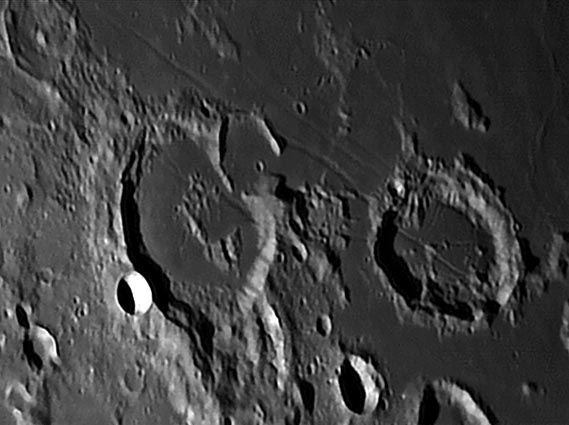Difference between revisions of "March 4, 2005"
| (6 intermediate revisions by the same user not shown) | |||
| Line 1: | Line 1: | ||
__NOTOC__ | __NOTOC__ | ||
=Go See 'Em - They are Gut= | =Go See 'Em - They are Gut= | ||
| + | <!-- Start of content --> | ||
<table width="85%" border="0" align="center" cellpadding="6" cellspacing="2"> | <table width="85%" border="0" align="center" cellpadding="6" cellspacing="2"> | ||
<tr> | <tr> | ||
| Line 12: | Line 13: | ||
</table> | </table> | ||
<table width="80%" border="0" align="center" cellpadding="8"> | <table width="80%" border="0" align="center" cellpadding="8"> | ||
| − | <tr><td><div align="center" class="main_sm">Image Credit: [mailto:paololazzarotti@astromeccanica.it Paolo R. Lazzarotti]</p> | + | <tr><td><div align="center" class="main_sm"><p>Image Credit: [mailto:paololazzarotti@astromeccanica.it Paolo R. Lazzarotti]</p> |
</div></td> | </div></td> | ||
</tr> | </tr> | ||
| Line 22: | Line 23: | ||
</p> | </p> | ||
<blockquote> | <blockquote> | ||
| − | <p align="right">— [mailto:tychocrater@yahoo.com Chuck Wood]</blockquote> | + | <p align="right">— [mailto:tychocrater@yahoo.com Chuck Wood]</p></blockquote> |
<p align="left"><b>Technical Details:</b><br> | <p align="left"><b>Technical Details:</b><br> | ||
27 Feb, 2005; 00:26 UT. Planewton DL-252 telescope + Lumenera LU075 M camera + Edmund Optics R+IR filter; 450 of 4200 frames.</p> | 27 Feb, 2005; 00:26 UT. Planewton DL-252 telescope + Lumenera LU075 M camera + Edmund Optics R+IR filter; 450 of 4200 frames.</p> | ||
| Line 29: | Line 30: | ||
<br>[http://www.hq.nasa.gov/office/pao/History/SP-362/c Apollo 8 View of Goclenius] | <br>[http://www.hq.nasa.gov/office/pao/History/SP-362/c Apollo 8 View of Goclenius] | ||
<br>Rukl Plate 48 | <br>Rukl Plate 48 | ||
| − | <p | + | </p> |
| + | <p><b>Yesterday's LPOD:</b> [[March 3, 2005|Rare Image of Common Crater]] </p> | ||
| + | <p><b>Tomorrow's LPOD:</b> [[March 5, 2005|Before and After: Antares and the Moon]] </p> | ||
</tr> | </tr> | ||
</table> | </table> | ||
| Line 40: | Line 43: | ||
<p align="center" class="main_titles"><b>Author & Editor:</b><br> | <p align="center" class="main_titles"><b>Author & Editor:</b><br> | ||
[mailto:tychocrater@yahoo.com Charles A. Wood]</p> | [mailto:tychocrater@yahoo.com Charles A. Wood]</p> | ||
| − | < | + | <!-- Cleanup of credits --> |
| − | + | <!-- Cleanup of credits --> | |
| − | < | + | <!-- Cleanup of credits --> |
| − | + | <!-- Cleanup of credits --> | |
| − | + | <!-- Cleanup of credits --> | |
| − | < | + | <!-- Cleanup of credits --> |
| − | < | + | <!-- Cleanup of credits --> |
| − | + | <!-- Cleanup of credits --> | |
| − | < | + | <!-- Cleanup of credits --> |
| − | + | <!-- Cleanup of credits --> | |
</td></tr> | </td></tr> | ||
</table> | </table> | ||
<p> </p> | <p> </p> | ||
| − | ---- | + | <!-- End of content --> |
| − | + | {{wiki/ArticleFooter}} | |
| − | |||
Latest revision as of 15:11, 15 March 2015
Go See 'Em - They are Gut
Image Credit: Paolo R. Lazzarotti |
|
Go See 'Em - They are Gut The Moon is full of hinterlands - places that are aren’t near famous craters, and hence are often overlooked. The western shore of Mare Fecunditatis is almost all hinterland – it is possible that no ever notices it because of the great attractions luring observers east (Messier twins) and west (Theophilus and neighbors). But Paolo seems to explore all the lunar backwaters, revealing unappreciated gems such as Goclenius and Gutenberg. Like many of the craters in this area, Go and Gut are old, tired and flooded by mare basalts that rose up crater faults. But unlike most nearby craters they are cut by a significant system of linear graben, the Goclenius Rilles. These rilles are aligned with the Gutenberg Rilles to the northwest. Normally rilles on the edge of a mare are concentric to that mare basin and formed as the weight of erupted magma caused the mare to subside, fracturing the bent edges. But Fecunditatis is one of the worst suspects for a lunar basin and it has no other basin edge rilles. I propose that the Goclenius and Gutenberg rilles are radial to the putative Gargantuan or Procellarum Basin, just as are the rilles around the western side of Oceanus Procellarum. The smaller Goclenius crater has a second, rarely imaged rille family. These narrow rilles mark Goclenius as a floor-fractured crater. Finally, pay attention to the walls of Go and Gut – the latter is mostly a simple scarp with light and dark radial bands. But the east wall of Goclenius is peculiar – it seems structureless and looks convex in cross-section. This hinterland will repay further study. Technical Details: Related Links: Yesterday's LPOD: Rare Image of Common Crater Tomorrow's LPOD: Before and After: Antares and the Moon |
|
Author & Editor: |
COMMENTS?
Register, Log in, and join in the comments.




